There are two models of rabbit housing in Kenya: indoors and outdoor rabbit housing. Indoor hutches are where the farmer makes hutches and places them inside an enclosing structure, often perceived as protection from cold and wind. The second and less popular among the larger producers, well, except Rabbit Crew Kenya 🙂 , is the outdoors housing system, where hutches are simply placed outside as seen at our farm below.
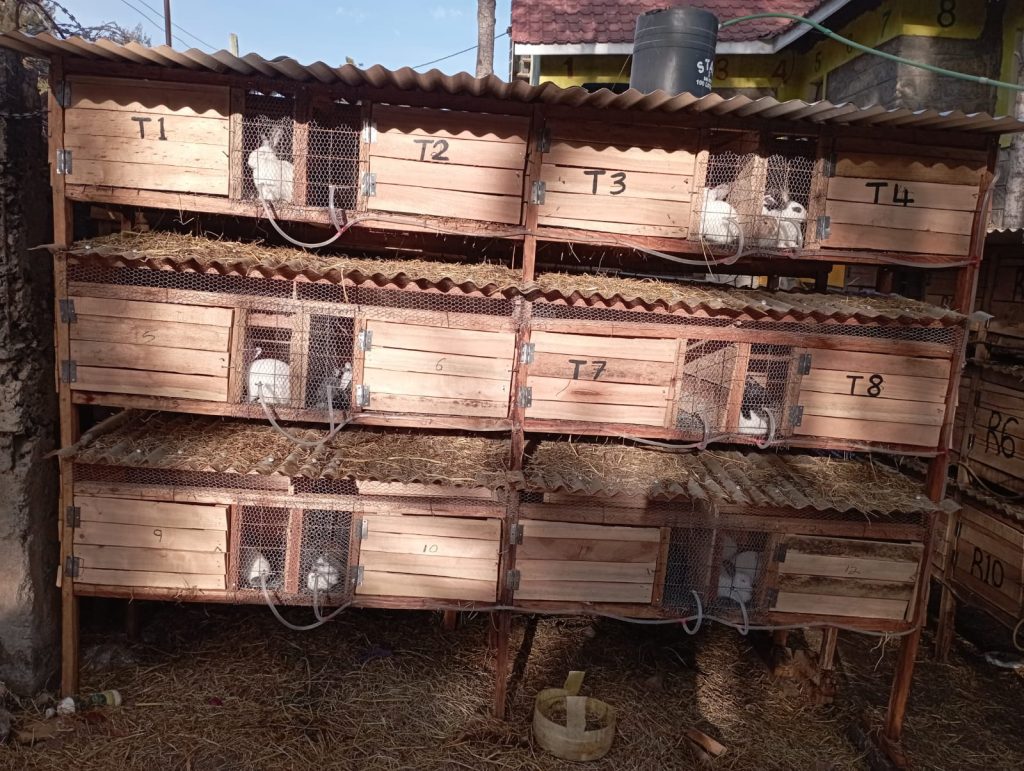
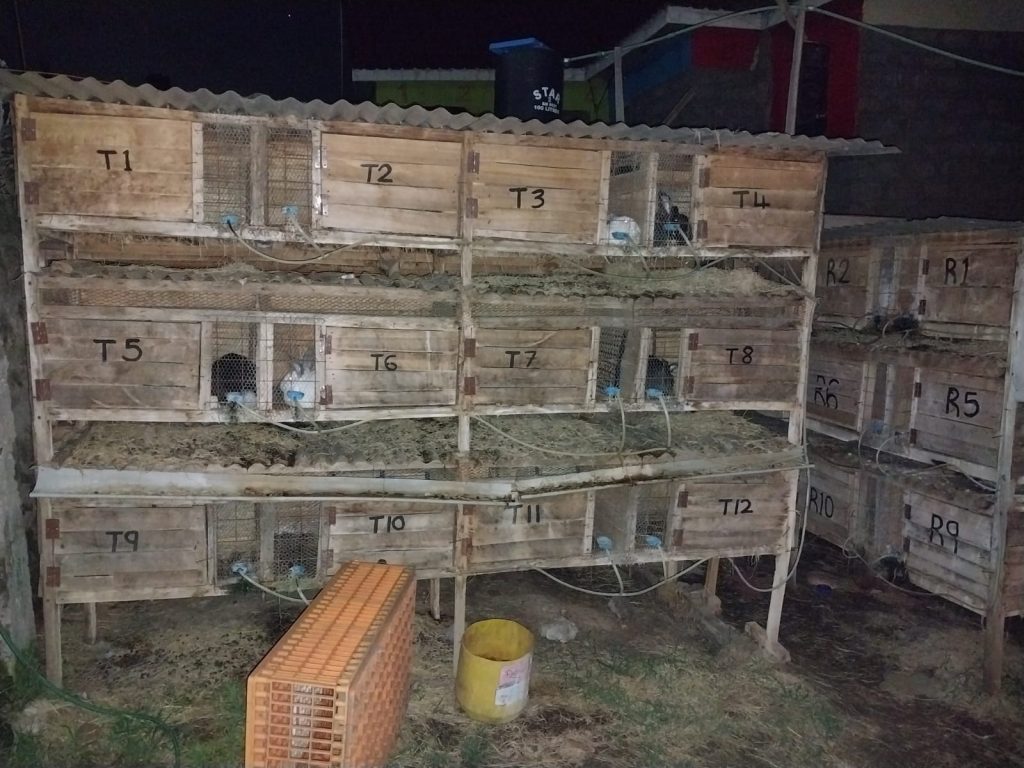
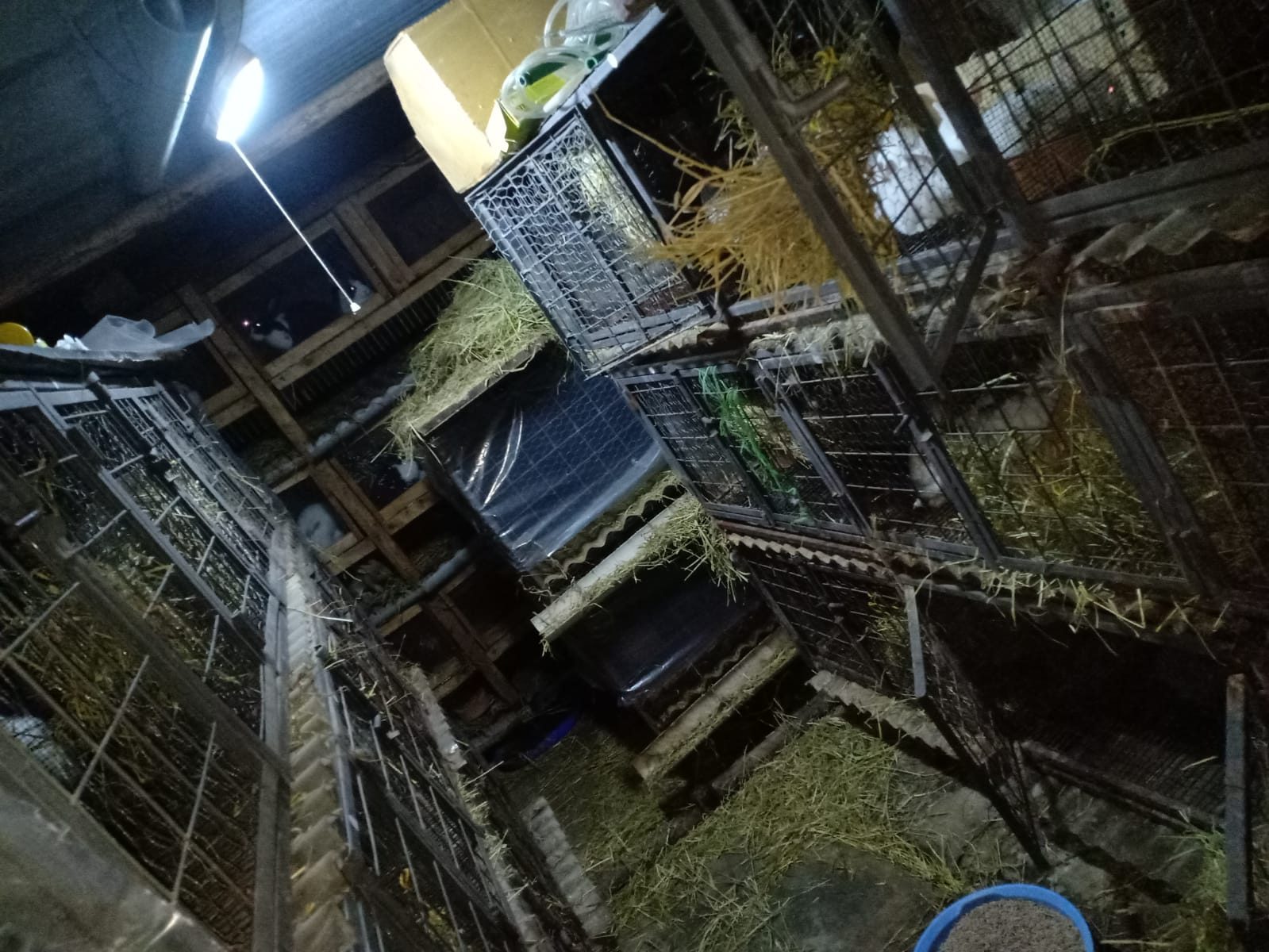
The Elephant in Indoor Housing Setups: Ammonia Buildup
At the time of writing, we have interacted with over 100 rabbit farms in the last five years and have been directly involved in setting up more than 4,000 rabbit hutches across Kenya. Through these experiences, we have observed several trends:
- Beginners’ Approaches to Rabbit Farming:
- Many new farmers start small, using basic setups with aspirations to scale their operations into viable businesses.
- Others dive into larger-scale production, often motivated by promises of contract farming arrangements where larger rabbit producers offer market access.
- The Prevalence of Indoor Setups:
- The largest producers and contractors have popularized indoor setups long before we entered the rabbit farming industry. This practice has since become the norm.
- We believe this trend has been influenced by large poultry farms, where chickens are housed in similar indoor environments.
- Lack of Historical Housing Comparisons:
- The rabbit industry in Kenya, as an emerging market, has lacked well-established guidelines or historical evaluations to compare the outcomes of indoor versus outdoor housing systems.
- Even government agricultural facilities lean heavily toward indoor setups, with little to no investment in outdoor systems for research purposes. This lack of comparison has denied farmers the opportunity to evaluate all available options.
- Outdoor Hutches as a Traditional Model:
- Outdoor hutches have been a long-standing tradition in Kenya, especially in rural households. For decades, these setups were common, often maintained as a hobby by children.
- However, with the advent of commercial rabbit farming, indoor systems gained traction, perceived as more organized and protective.
- The Disconnect Between Tradition and Modern Disease Patterns:
- Interestingly, Snuffles and Pasteurellosis, are almost exclusively associated with indoor rabbit farms.
- Older generations who raised rabbits in outdoor hutches are unlikely to have encountered this disease, as their traditional systems naturally supported healthier environments through better ventilation and reduced overcrowding.
- How Indoor Hutches Build Up Snuffles and Pasteurellosis
- Large indoor farms often attempt to incorporate urine gutters to manage waste, but these gutters frequently lack proper slopes or clearance from hutch doors. This design flaw leads to pools of urine collecting on the gutters, even in systems with underground drainage.
- These urine pools release ammonia fumes—a characteristic of rabbit urine, known for its use as a natural pest repellent. Unfortunately, this persistent ammonia exposure stresses rabbits’ respiratory systems. What begins as an innocent sneeze soon develops into this chronic respiratory disease.
- Through the inevitable maternal to kits or direct close contact, infected rabbits pass the disease to their offspring, perpetuating a cycle of infection.
- Cleaning efforts in indoor setups are costly and labor-intensive, needing constant attention to prevent ammonia buildup. Even daily cleaning often fails to match the frequency of rabbits’ urination. In contrast, outdoor hutches benefit from natural airflow that require less frequent cleaning too.
- The Consequences
- Indoor farms commonly report a nearly 90% prevalence of pasteurellosis in various stages—ranging from asymptomatic cases to fully-blown infections.
- These farms also exhibit heavy reliance on antibiotics, with farmers often administering incomplete or improper treatments. For instance, pasteurellosis treatment typically requires extended regimens of up to 30 days, which are rarely followed through.
- Farmers face additional challenges from antibiotic resistance, long withdrawal periods (up to 60 days of 30 days’ treatment and subsequent meat slaughters withdrawals, frustrating their meat business), and frequent relapses, as the root cause—ammonia buildup—remains unresolved in indoor setups.
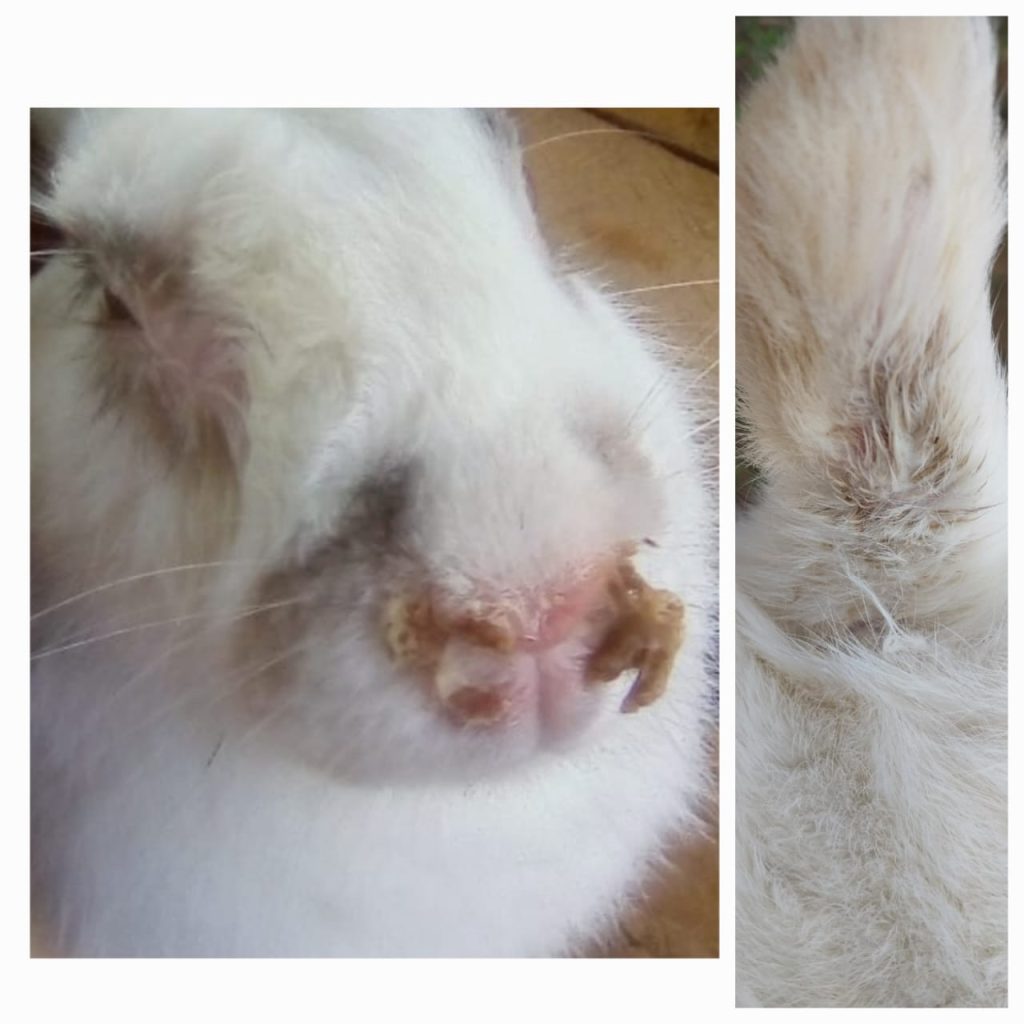
Rabbit Crew kenya’s Rule of Thumb to Overcome This Disease
If you cannot spend an entire day in your rabbitry, reading a book or eating a meal inside without feeling discomfort from the smell, neither will your rabbits. Their comfort is directly linked to the air quality in their environment. Outdoor hutches naturally benefit from better air circulation.
If you must use indoor hutches, ensure the enclosure has ample vertical space—up to four or more times the height of the hutches from the ground. This helps mimic the airflow of an industrial warehouse or the open feeling of being inside a large stadium with a raised roof. The number of tiers—whether one, two, or three—should allow for tall, open space above them. In large industrial indoor rabbit farms around the world, it’s common to see a single tier with significant open space above—what you might call a “rabbit cathedral.”
If a sophisticated internal ventilation system is not feasible, consider incorporating a half-open meshed sidewall to improve airflow. While we are capable of building both indoor and outdoor hutches, we always advocate for outdoor setups—especially for beginner farmers who may not want to invest in costly infrastructure. Most rabbit farmers in Kenya start small as they learn the ropes of a still-developing rabbit meat market.
Contact us if you need help setting up a disease-free rabbit farm and avoid purchasing infected breeding stock! The matted fur on a rabbit’s paws almost always indicates a history of this disease, even if the farmer previously treated it before selling the breeder rabbit to you, with the clinical signs of the disease in recession, to relapse later at your farm.
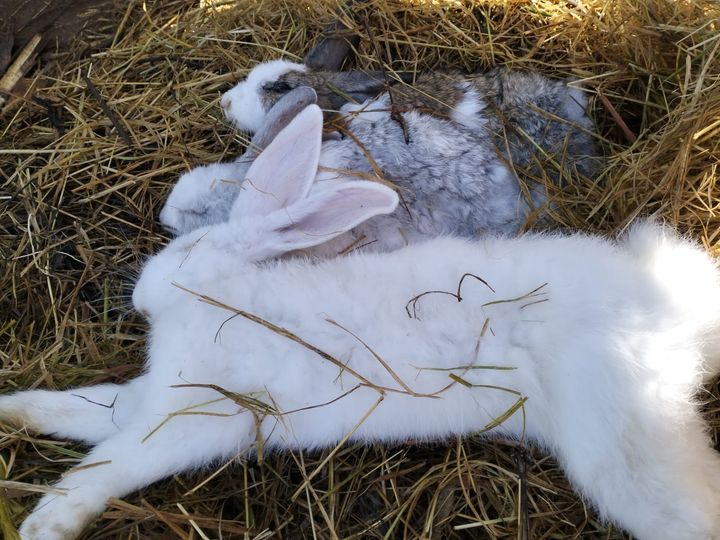
Thank you for this at least know I hope to make it better
Let us know of the progress made.